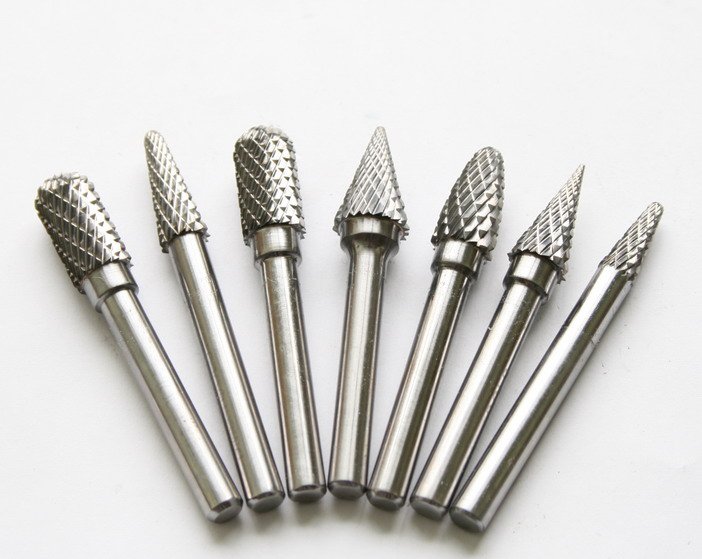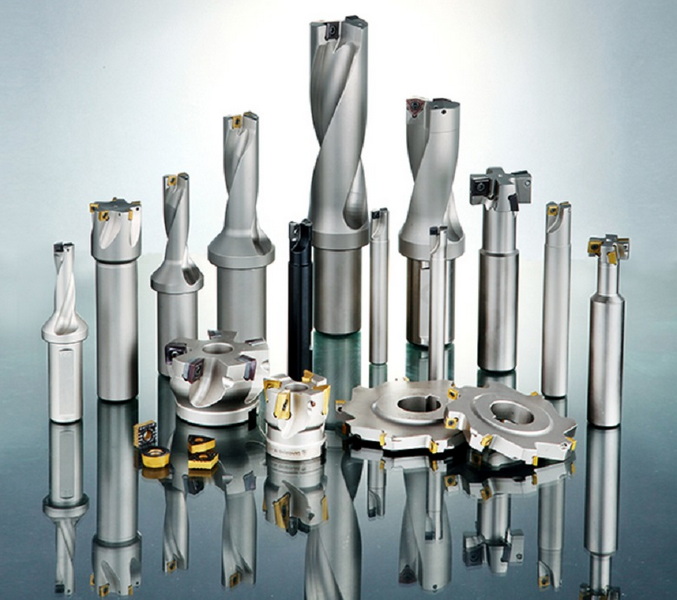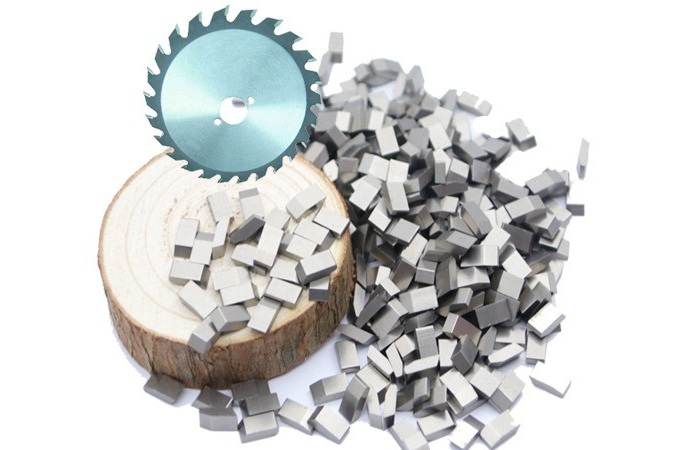Content Menu
● Introduction to Tungsten Carbide
● Chemical Composition and Structure
● Physical and Mechanical Properties
● Manufacturing Process of Tungsten Carbide
● Types and Grades of Tungsten Carbide
● Key Applications Across Industries
● Advantages Over Traditional Materials
● Environmental and Recycling Aspects
● Conclusion
● FAQ: Top 5 Questions About Tungsten Carbide
>> 1. What makes tungsten carbide harder than steel?
>> 2. How is tungsten carbide different from regular steel?
>> 3. Can tungsten carbide be recycled?
>> 4. What are the main industrial uses of tungsten carbide?
>> 5. Is tungsten carbide safe for use in jewelry and medical devices?
Tungsten carbide is a remarkable material that has revolutionized modern industry with its exceptional hardness, durability, and versatility. But what exactly is tungsten carbide metal? How is it made, what are its unique properties, and why is it so widely used across manufacturing, engineering, and even jewelry? This comprehensive guide explores everything you need to know about tungsten carbide, from its atomic structure to its real-world applications, manufacturing processes, and frequently asked questions.

Introduction to Tungsten Carbide
Tungsten carbide is a compound formed by combining tungsten and carbon atoms in a precise ratio. This union results in a material that is nearly as hard as diamond, yet possesses the toughness and resilience required for demanding industrial environments. Originally developed in the early 20th century, tungsten carbide has become synonymous with high performance in cutting, drilling, and wear-resistant applications.
Chemical Composition and Structure
At its core, tungsten carbide is made of tungsten (W) and carbon (C) atoms, typically in a 1:1 ratio. The most common industrial form contains about 94% tungsten and 6% carbon by weight. However, to enhance toughness and workability, metallic binders such as cobalt or nickel are often added. This creates a composite known as a cermet, combining the hardness of ceramic tungsten carbide with the ductility of metals.
The atomic structure of tungsten carbide is hexagonal, providing a dense, stable lattice that contributes to its remarkable properties. The strong chemical bonds between tungsten and carbon atoms are responsible for its extreme hardness and resistance to deformation.
Physical and Mechanical Properties
Tungsten carbide stands out for its unique combination of physical and mechanical characteristics:
- Hardness: Ranks 9–9.5 on the Mohs scale, second only to diamond. This makes it highly resistant to scratching, abrasion, and wear.
- Density: Approximately twice as dense as steel, giving it substantial heft and stability.
- Melting Point: Extremely high, around 2,870°C, making it suitable for high-temperature environments.
- Compressive Strength: Among the highest of all known materials, allowing it to withstand immense pressures without deforming.
- Thermal Conductivity: Efficiently dissipates heat, which is crucial for cutting and drilling operations.
- Electrical Conductivity: Comparable to some metals, allowing for specialized electronic and industrial uses.
These properties make tungsten carbide invaluable in situations where longevity, precision, and resistance to extreme conditions are required.
Manufacturing Process of Tungsten Carbide
The production of tungsten carbide is a sophisticated process that blends science and craftsmanship. Here's a step-by-step overview:
1. Raw Material Preparation:
Tungsten powder and carbon black are mixed, typically in a ball mill, to achieve a uniform blend.
2. Carburization:
The mixture is heated in a graphite furnace at temperatures ranging from 1,300°C to 1,600°C. This causes the tungsten and carbon to react, forming tungsten carbide powder.
3. Milling and Sieving:
The resulting powder is milled to achieve the desired particle size and then sieved for uniformity.
4. Mixing with Binders:
To improve toughness, the tungsten carbide powder is mixed with a metallic binder (usually cobalt or nickel).
5. Compaction:
The blended powder is pressed into the desired shape using molds.
6. Sintering:
The compacted shapes are heated to around 1,500°C. This fuses the particles together, creating a dense, solid body.
7. Finishing:
The sintered parts are ground, polished, or coated as required for their final application.
This process allows for precise control over the material's microstructure, enabling manufacturers to tailor tungsten carbide's properties for specific uses.
Types and Grades of Tungsten Carbide
Tungsten carbide is available in various grades, each optimized for particular applications. The main variables include:
- Grain Size: Fine-grained carbides offer higher hardness, while coarse grains provide greater toughness.
- Binder Content: Higher binder content increases toughness but may reduce hardness.
- Additives: Elements like titanium, tantalum, or vanadium can be added to enhance specific properties, such as resistance to corrosion or thermal shock.
Common types include:
| Type | Key Attributes | Typical Applications |
| Standard WC-Co | Balance of hardness and toughness | Cutting tools, mining equipment |
| Fine-grain WC | Maximum hardness, wear resistance | Precision cutting, dies |
| WC-TiC, WC-TaC | Enhanced thermal/corrosion resistance | Aerospace, high-temp environments |
| WC-Ni | Improved corrosion resistance | Oil & gas, marine applications |
Key Applications Across Industries
Tungsten carbide's unique combination of hardness, strength, and durability has led to its adoption in a vast array of industries:
- Cutting Tools: Drill bits, end mills, saw blades, and inserts for machining metals, composites, and plastics.
- Mining and Drilling: Wear-resistant components such as picks, teeth, and liners for drilling and excavation equipment.
- Oil and Gas: Valve seats, flow restrictors, and pump impellers that must withstand abrasive and corrosive conditions.
- Aerospace: High-precision components requiring dimensional stability and resistance to extreme temperatures.
- Jewelry: Rings, bracelets, and watch bands that are scratch-resistant and hypoallergenic.
- Medical Devices: Surgical instruments and implants that require biocompatibility and long-term durability.
- Consumer Electronics: Wear-resistant parts in smartphones, laptops, and other devices.
- Automotive and Marine: Engine parts, fuel injector nozzles, and components exposed to high wear and stress.

Advantages Over Traditional Materials
Tungsten carbide offers several key advantages compared to conventional metals and alloys:
- Superior Wear Resistance: Outlasts steel and other tool materials by a significant margin, reducing the need for frequent replacements.
- High Temperature Stability: Maintains hardness and structural integrity even at elevated temperatures.
- Cost Efficiency: Longer tool life and reduced downtime translate into lower operating costs.
- Versatility: Can be engineered for a wide range of applications, from heavy industry to fine jewelry.
- Consistent Performance: Retains sharpness and dimensional accuracy over extended use.
Environmental and Recycling Aspects
Tungsten carbide is not only valuable for its performance but also for its recyclability. Scrap and worn-out tools can be collected, processed, and reused, conserving resources and reducing environmental impact. The recycling process typically involves grinding the material into powder, removing impurities, and re-sintering it into new products.
Conclusion
Tungsten carbide metal is an extraordinary material that stands at the intersection of science, engineering, and innovation. Its unmatched hardness, strength, and resistance to wear have made it indispensable in modern manufacturing, mining, aerospace, and even fashion. As technology advances and industries demand ever-greater performance, tungsten carbide will continue to play a pivotal role in shaping the tools and products that define our world.

FAQ: Top 5 Questions About Tungsten Carbide
1. What makes tungsten carbide harder than steel?
Tungsten carbide's hardness stems from its strong atomic bonds and dense crystal structure, which resist deformation and scratching far more effectively than steel. This allows tools made from tungsten carbide to maintain their sharpness and wear resistance even under extreme conditions.
2. How is tungsten carbide different from regular steel?
Unlike steel, which is an alloy of iron and carbon, tungsten carbide is a compound of tungsten and carbon. Tungsten carbide is significantly harder and more wear-resistant, making it ideal for cutting, drilling, and applications where longevity is critical.
3. Can tungsten carbide be recycled?
Yes, tungsten carbide is highly recyclable. Used tools and scrap can be processed and reformed into new products, conserving valuable resources and reducing environmental impact.
4. What are the main industrial uses of tungsten carbide?
Tungsten carbide is widely used in cutting tools, mining and drilling equipment, oil and gas components, aerospace parts, jewelry, medical devices, and consumer electronics due to its exceptional hardness and durability.
5. Is tungsten carbide safe for use in jewelry and medical devices?
Tungsten carbide is hypoallergenic and biocompatible, making it safe for use in jewelry and certain medical applications. However, care should be taken with rings, as their hardness can make them difficult to remove in emergencies.
















